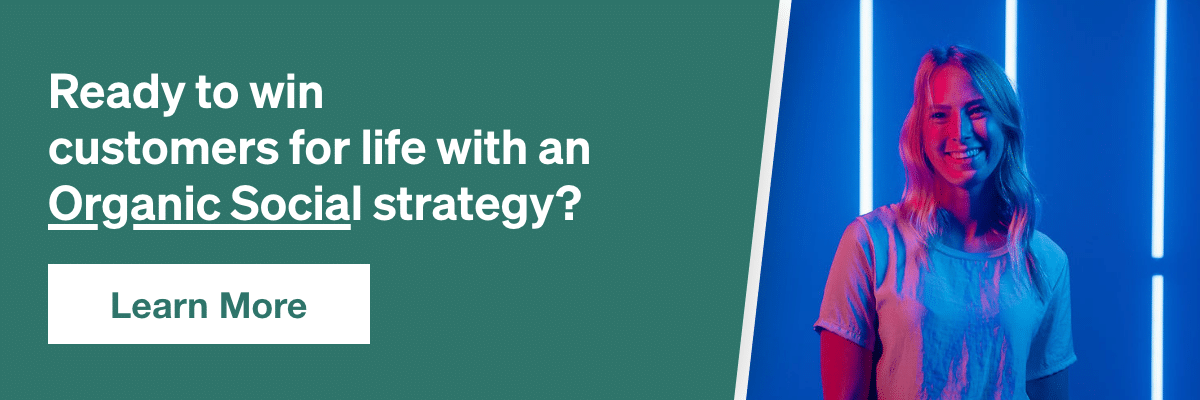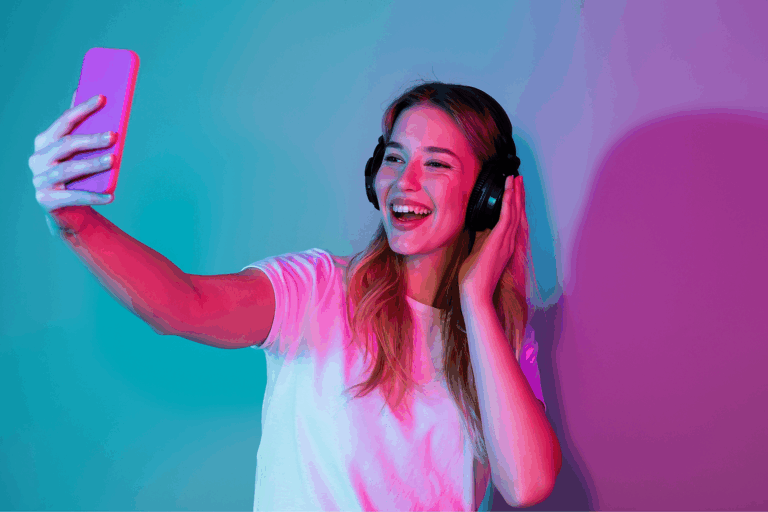How to Get More Twitter Engagement

Maybe it’s a snappy joke, a heartfelt statement, or even a fresh GIF perfectly ripe for the comment section. No matter the content, a viral tweet can carry a massive audience or increased engagement and even kickstart Twitter popularity.
But it’s not just average users who catapult to viral-status. Brands like Nike, Starbucks, and Netflix have all grown multi-million followings on Twitter. How, you might ask?
They invest in Twitter engagement.
When it comes to Twitter, you need more than a weekly hashtag to boost your business. To that end, we’ll break down how to use twitter for business, and why a Twitter account can significantly transform your brand or social media marketing agency.
What is Twitter Engagement?
The word “engagement” can seem vague—and that’s a little on purpose!
Engagement is a wide umbrella term, covering any activity between accounts on a social media platform. Usually, this activity is quantifiable, such as 150 likes or 17 responses. For aTwitter profile, engagement includes:
- Favoriting
- Retweets
- Quote tweets
- Comments or responses
- Saved tweets
- Mentions
- Follows
- Profile clicks
- Link or hashtag clicks
All of these actions involve another Twitter user interacting with your twitter account—and for brands, that is the ultimate goal. The more users engage with your Twitter, the more likely users will visit your website or investigate your business.
Why is Twitter Engagement Important for Businesses
Sure, Twitter is a social media hallmark with plenty of memes, gossip, and news. But this website also functions as an incredible marketing platform.
On Twitter, you’re tapping into a free source of 192 million daily active users.1 Not to mention, over 1.6 billion people view Tweets via third-party online platforms each month—it’s hard to top that level of exposure.2
Increase your brand’s Twitter performance and presence, and you’ll likely reap a few proven benefits:
- Brand positivity – If your business replies to a user’s tweet, there’s a 77% chance that user will feel more positive about your brand.
- Increased customer action – After viewing a brand’s tweet, 54% of users engaged further with the brand. This included visiting their website, researching the brand, or retweeting brand content.3
- Customer promotion – In total, 80% of Twitter users have mentioned a brand’s account in a tweet. Boost your engagement, and you could have customers advertising for you.3
As a whole, Twitter engagement reveals what your target audience likes. By interacting with potential customers and observing their reactions, you gain their attention and learn their preferences—two essential marketing drives.
Tips to Increase Twitter Engagement
Let’s face it: building a massive following on Twitter isn’t easy. Otherwise, everyone would be a social media star or influencer.
But don’t let that discourage your 280-character dreams. With the right tips and tools (and a nose for trends), you can greatly increase your Twitter engagement and customer base.
Create a Viral-Friendly Tweet
Snappy and succinct is the Twitter motto. However, there’s more to an effective twitter post than staying under 280 characters.
You might use Twitter for marketing purposes, but the majority of users see this platform as social media. Relevancy, trends, and attention-grabbing formats are key to attracting the average user’s eye.
When typing that next tweet, consider these content guidelines:
- Know your audience – Did you know 53% of Twitter users are between 35-65 years old?4 Or that Twitter users are more likely to have a college degree than the general population?5 Understanding Twitter’s user base is crucial to creating brand content. More importantly, keep in mind what appeals to your target audience.
- Keep it short – When you can, stick with the old 140-character tweet limit. Even better, aim for tweets between 71-100 characters. On average, this tweet length has a 17% higher engagement rate.6
- Provide value – Every tweet should offer something of value. However, that doesn’t have to mean a discount or promo (although those are helpful). Humor, inspiration, and product information are all valuable tweet content.
- Stay relevant – Not checking the Trending tab on your Twitter feed? Big mistake. Focus at least some of your content on trending topics, and you’ll widen your potential audience. Also, relevance increases likeability—a recent study found that “cultural relevance” propels 25% of customer purchases.7
- Hashtags – Not all hashtags are created equal (it’s time to move on from #tbt). However, any hashtag is better than none—on average, they increase retweets by 33%.8 Don’t go overboard, though. Tweets with a single hashtag receive more engagement than ones with multiple hashtags, so choose wisely.
- Links – One of the easiest ways to drive website traffic? Place the link right in front of customers! A middle-Tweet position has the best engagement, increasing retweets by 26%.8
Think Outside the Text Box
They’re not just for Instagram or Facebook anymore. Visual graphics—pictures, videos, even Real Housewives GIFs—are incredible Twitter engagement tools.
Besides skirting the 280-character tweet limit, graphics instantly draw attention and increase engagement. Let’s explore the best ways for increased engagement via visuals:
- Images & GIFs – A picture is worth a 1000 words… or maybe forty tweets with better engagement. Compared to text-only posts, tweets with images receive 38% more retweets9, while GIFs draw 55% higher engagement.10 So on your next customer response, try sprinkling in a visual (the shoulder-shimmy Shaq GIF always works) while following the social media image sizes guidelines.
- Video – You might not associate video with Twitter. But 82% of Twitter users watch video content—and it significantly drives up engagement, creating 10x the amount for non-video tweets.11 For businesses, keep videos short (maximum 15 seconds) and showcase your product upfront.
- Live content – A newer feature, Twitter’s live chats are a great way to get followers involved. Try to plan a live chat with fellow accounts in your industry, and spread the word beforehand. And to really drive engagement, ask audiences for questions they’d like answered—you’ll build a stronger customer connection.
Engage With Other Accounts
You could be a tweet-posting machine, spewing hashtags left and right. But if you don’t actually interact with other accounts, you’re missing out big time on boosting your Twitter engagement rate.
Building rapport with users gives brands a personable and caring quality. The more you pay attention to customers, the more they’ll pay attention to you. Even better, you’ll create opportunities for non-following users to see your content.
To build that customer-brand connection, here are a few actions to take on Twitter:
- Favorite, retweet, or respond to other tweets – Put yourself out there, and share the tweeting love. The more you engage with users, the more exposure your tweets get—and more exposure means a higher chance of engagement.3
- Always respond to mentions – Think of mention responses like customer service. You can build a reputation for high quality customer care by responding to mentions, both negative and positive. Don’t be afraid to throw in a “Thank you!” to loyal customers.
- DM Campaigns – For small businesses, DM campaigns are a great way to welcome customers or offer promotions—in fact, they have a 300% higher click-rate than email campaigns.8 Just make sure to keep your Direct Message personal and short (no one likes spam).
- Twitter Polls – There’s nothing like going to the source. Use Twitter polls to both gather customer opinion and create a fun connection with users. The more you can make the poll about your product, the better.
- Just ask – People love to connect. All you have to do is open the door! If you want to increase engagement, ask users to retweet—it increases the odds by at least 10x.12
Nail the Timing
In a bout of midnight insomnia, the perfect tweet may come down to you like a dream. But hold back your fingertips! To reach peak engagement, timing your tweets is everything.
For night owls and early risers alike, here are the best timing tips for Tweet engagement:
- Identify peak hours – When considering what is the best time to post on Twitter, the answer is typically morning rush hour (8-10am), particularly on Wednesdays and Fridays.13 But every industry is different—beauty and tech brands will have different audiences, and thus different peak hours.
- Simplify – A classic case of “less is more”. The sweet spot for Twitter engagement is around one to five tweets per day—not twenty or higher.14
- Space it out – While debated, the average lifespan of a tweet is around 18 minutes. After that, engagement significantly drops off. Counter this with spacing out your posts, so your brand content appears on timelines throughout the day.15
- Recycle – We’re in a content-heavy world, and odds are some followers missed your tweet the first time. Don’t be afraid to repost an important tweet, particularly if it becomes relevant again (like a discount offer).
Training Your Twitter Fingers | How to get More Twitter Engagement
As a global platform, Twitter is an incredible portal to new customers. But Twitter engagement is a little more complicated than running an ad billboard—you’re facing millions of users across the world, all with different cultures, time zones, lifestyles, and needs.
The best advice for engaging this global community? Know your brand. Once you know exactly what you’re selling and why, your tweets can reach your target audience. Add in a few of these tips, and your Twitter profile will be an irreplaceable source for #marketing. Your social media marketing strategy doesn’t stop here! Go beyond Twitter and expose your brand to other platforms like TikTok for brands.
Sources:
- Statista. Monetizable Daily Active Twitter Users, Worldwide. https://www.statista.com/statistics/970920/monetizable-daily-active-twitter-users-worldwide/
- Zote, Jacqueline. 5 strategies to amplify your Twitter engagement. https://sproutsocial.com/insights/twitter-engagement/
- Twitter. Study: Exposure to brand Tweets drives consumers to take action – both on and off Twitter. https://blog.twitter.com/en_us/a/2014/study-exposure-to-brand-tweets-drives-consumers-to-take-action-both-on-and-off-twitter.html
- Lin, Ying. 10 Twitter Statistics Every Marketer Should Know in 2021. https://www.oberlo.com/blog/twitter-statistics
- Wojcik, Steven, et al. Sizing Up Twitter Users. https://www.pewresearch.org/internet/2019/04/24/sizing-up-twitter-users/
- Lee, Kevan. The Optimal Length for Every Social Media Update and More. https://buffer.com/library/optimal-length-social-media/
- Twitter. Brands + Culture + Twitter = Impact. https://marketing.twitter.com/en/insights/brands-plus-culture-plus-twitter-equals-impact
- Webster, Taylor. 8 Surprising Twitter Statistics That Will Help You Get More Engagement. https://postcron.com/en/blog/8-surprising-twitter-statistics-get-more-engagement/
- Twitter. What fuels a Tweet’s engagement? https://blog.twitter.com/official/en_us/a/2014/what-fuels-a-tweets-engagement.html
- Twitter Business. 6 ways to use GIFs in your Twitter strategy. https://business.twitter.com/en/blog/6-ways-gifs-twitter-strategy.html
- Twitter Business. Twitter video resources. https://business.twitter.com/en/resources/video.html
- Long, Jonathan. Increase Retweets and Improve Engagement on Twitter With These 12 Tips. https://www.entrepreneur.com/article/242123
- Hutchinson, Andrew. The Best Times to Post on Social Media in 2020. https://www.socialmediatoday.com/news/the-best-times-to-post-on-social-media-in-2020-report/574045/
- Patel, Neil. How Frequently You Should Post on Social Media According to the Pros. https://www.forbes.com/sites/neilpatel/2016/09/12/how-frequently-you-should-post-on-social-media-according-to-the-pros/
- Leiter, Melissa. The Lifespan of Social Media Posts. https://www.socialmediatoday.com/content/lifespan-social-media-posts
Our Editorial Standards
Reviewed for Accuracy
Every piece is fact-checked for precision.
Up-to-Date Research
We reflect the latest trends and insights.
Credible References
Backed by trusted industry sources.
Actionable & Insight-Driven
Strategic takeaways for real results.






